Seven Hours with Hokusai
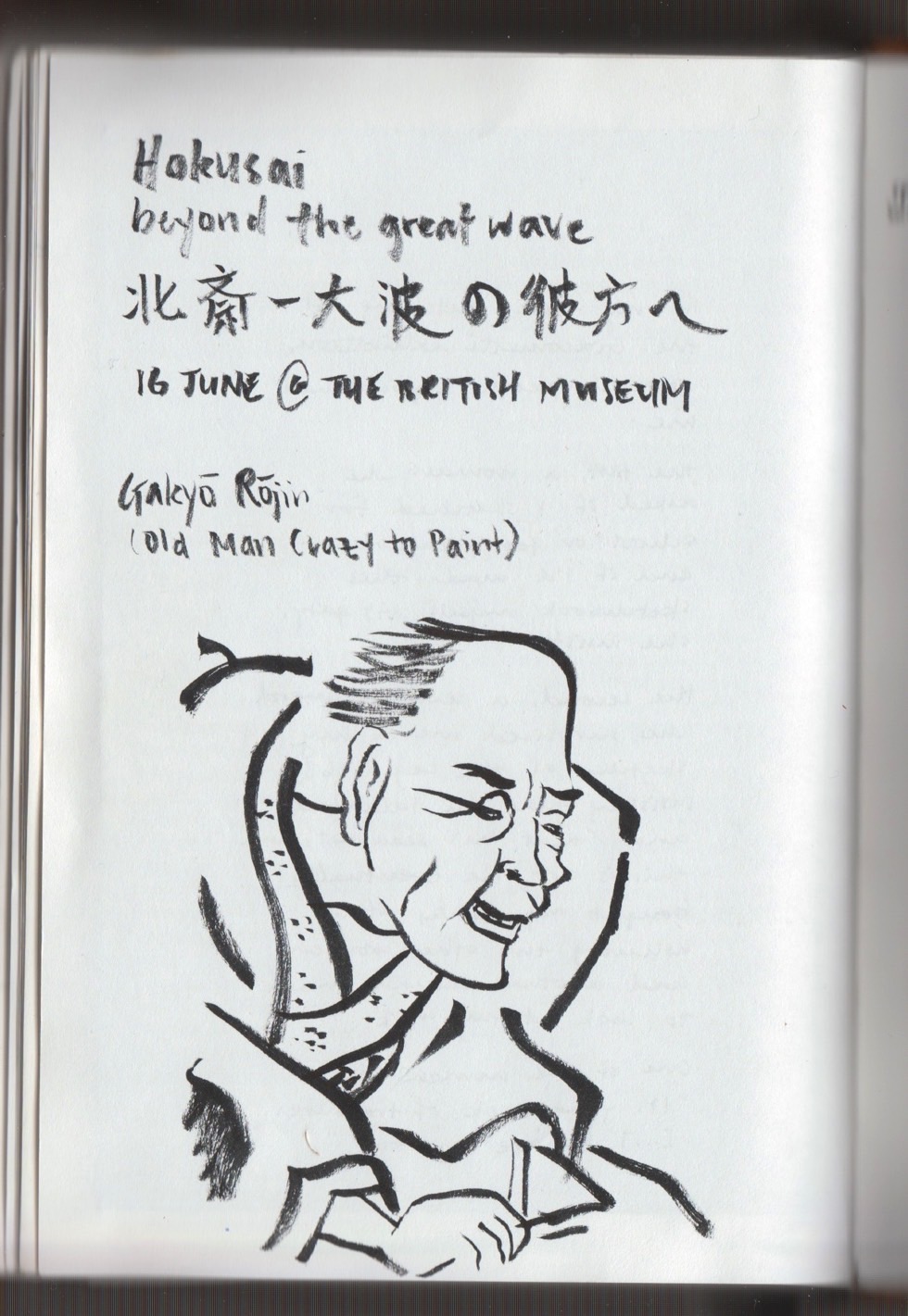
When we visit an exhibition, what exactly are we paying attention to? Yin Ying Kong opens one of her sketchbooks, made while at the British Museum’s major Hokusai show, to think about the duration, extent and degree of ‘proper’ attention…
Screen the exhibition for something ‘manageable’ to draw.
I remember looking for something reasonably simple (or unapologetically ugly) to copy as a ‘warm-up’; to get used to gripping the stationery, gain control of my line quality, and acquire a sense of the artist’s illustrative shapes and gestures. Their hurried sketches, line drawings, and surrealistic renderings are usually the most forgiving.
As I attempted a portrait of Hokusai, Gakyō Rōjin (‘Old Man Crazy to Paint’), observation fatigue set in after I had only outlined his face, my strokes getting coarser with impatience.
(Works I deem manageable at first sight are oftentimes registered in the drawing process as distinctly unmanageable, and rarely ever the other way.)
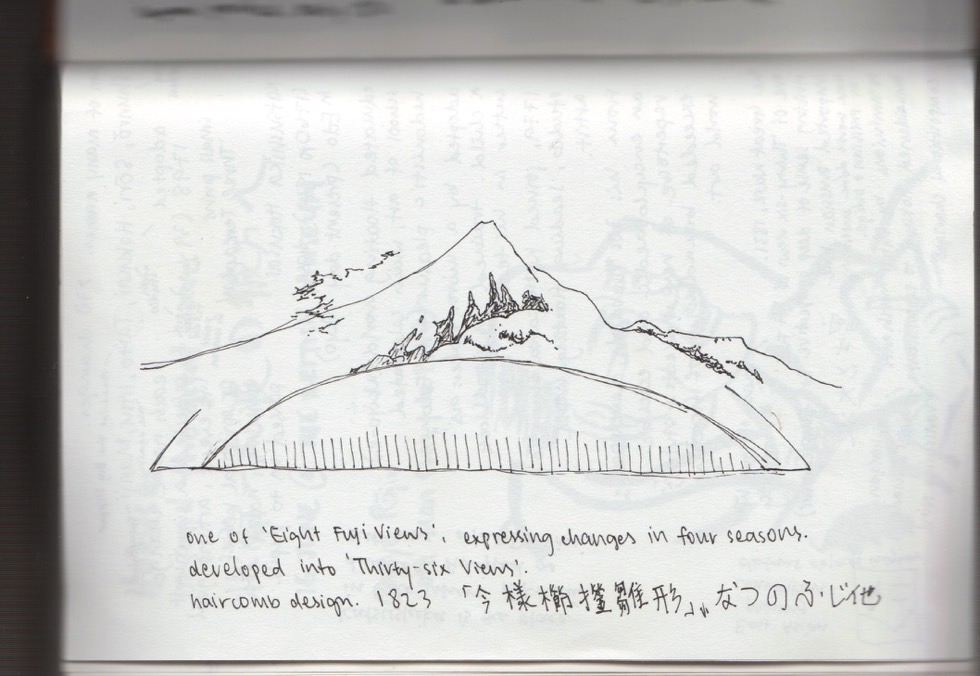
Treat the first few sketches as acclimatisation exercises.
I started by making indelible marks, to eliminate any hesitation, until my strokes were firm even if they were off. If the lines feathered apart, I hadn’t done enough.
It seemed strangely appropriate to be copying Hokusai’s designs. Art apprenticeship in the ukiyo-e era involved copious amounts of reproduction and imitation; Hokusai published picture books, albums of model paintings, and drawing manuals to be copied by his students. Perhaps I fancied myself his apprentice, copying his works nearly two centuries later.
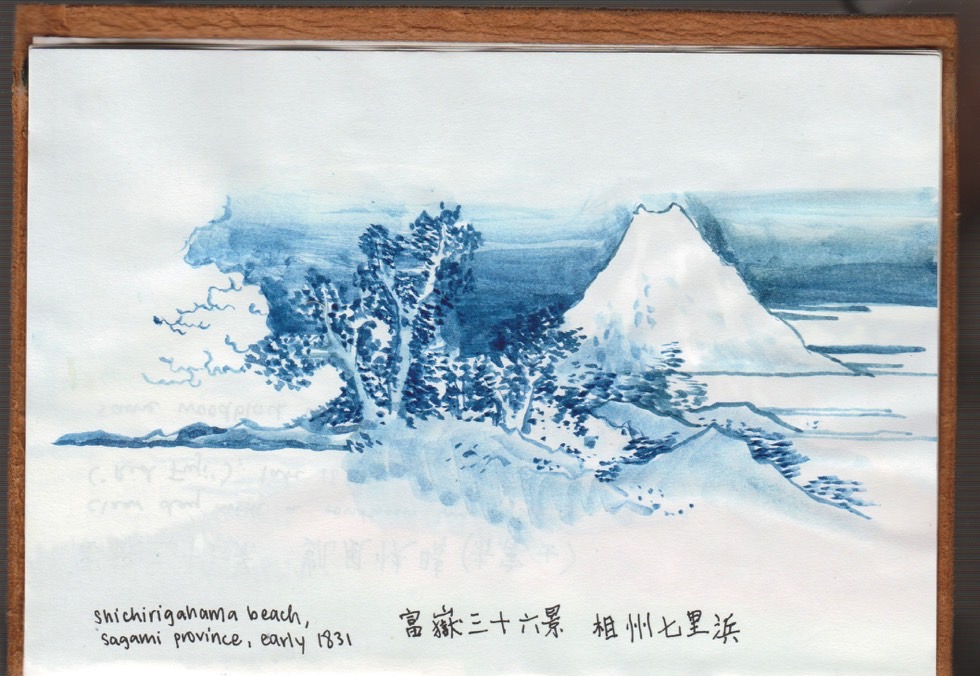
Stop when the exercise goes increasingly wrong.
I was determined to capture the Prussian blue so loved by Hokusai, but the more layers of paint I added, the muddier the colours got. (This was one of those unexpectedly unmanageable exercises.)
When I revisit these drawings, I like to think the feeling of ‘wrongness’ emerges as the negative imprint of ‘something right’, deep in the recesses of my mind. Shichirigahama Beach lives in my memory somewhere, even if I can’t conjure it at will.
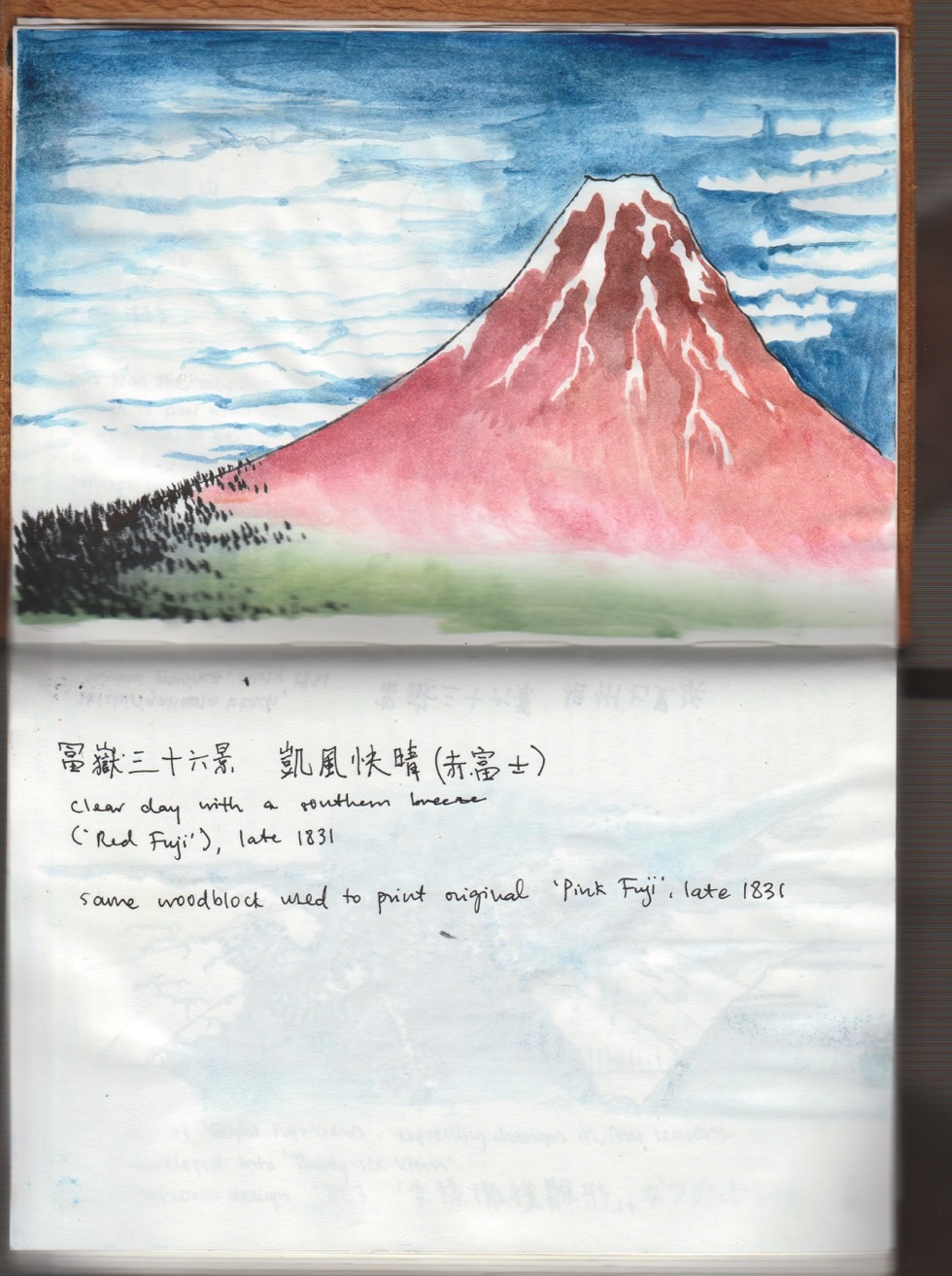
Work up to something more complex.
I started using more uncooperative mediums – those more liquid and fickle; that depleted and dissipated; that coalesced when I didn’t want them to and refused to when I did – and increased the number of visual elements – line, shape, space, texture, tone, colour, form; seven of them drilled into my head at art school a decade ago – progressing from lines to textures to tones in monochrome; then to the multi-coloured, multi-layered, multi-medium.
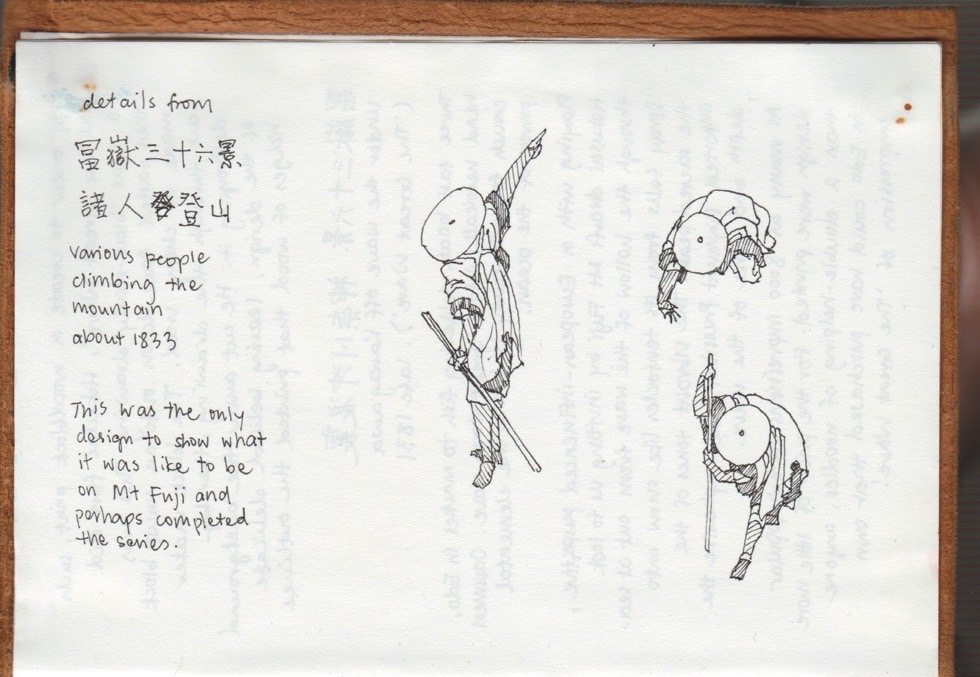
Isolate details.
I’d barely gotten past the introductory section of the show by this point and the entrance was mere metres away. Somehow, I had the feeling that I’d be documenting a lot (even bringing a second sketchbook) and needed to stimulate my sketching ‘stamina’, which I knew to be rooted in my level of interest.
Playing it up with scale and leaning closer in, I fixated on finer points of intrigue – the small figures dotting Hokusai’s substantial landscapes, down to their very fingers.
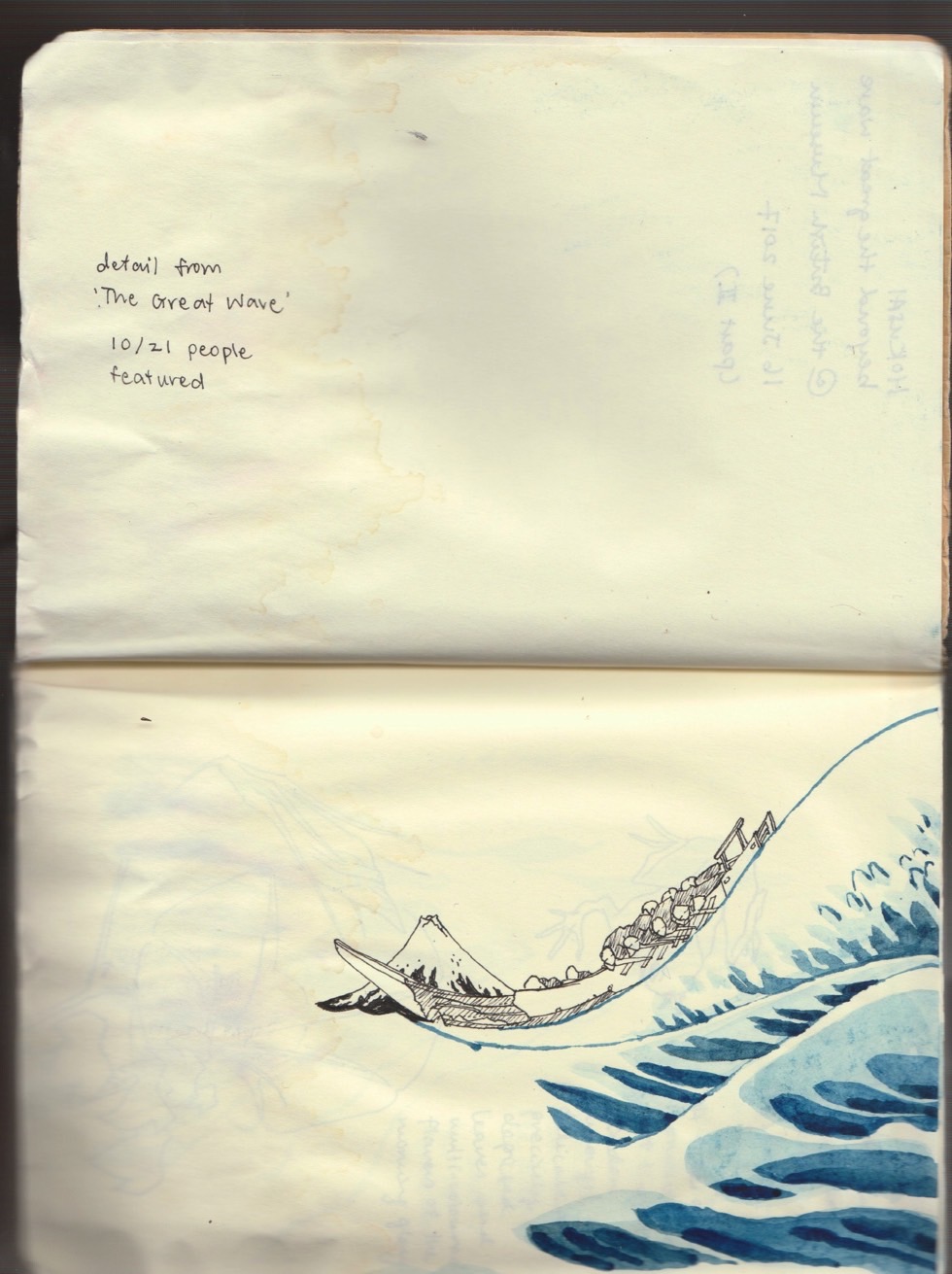
Deconstruct the artist’s process when ‘repeating’ it.
Honed in on a cluster of details in The Great Wave, I saw shapes upon shapes; colours upon colours; the marks that would’ve been made first; and which part of the ‘block-ready’ drawing, pasted face-down onto cherry wood, would’ve been cut away last; as if I briefly inhabited the mind of the maker, or borrowed their hands in a kind of imperfect reenactment. (One of my more fanciful imaginings.)
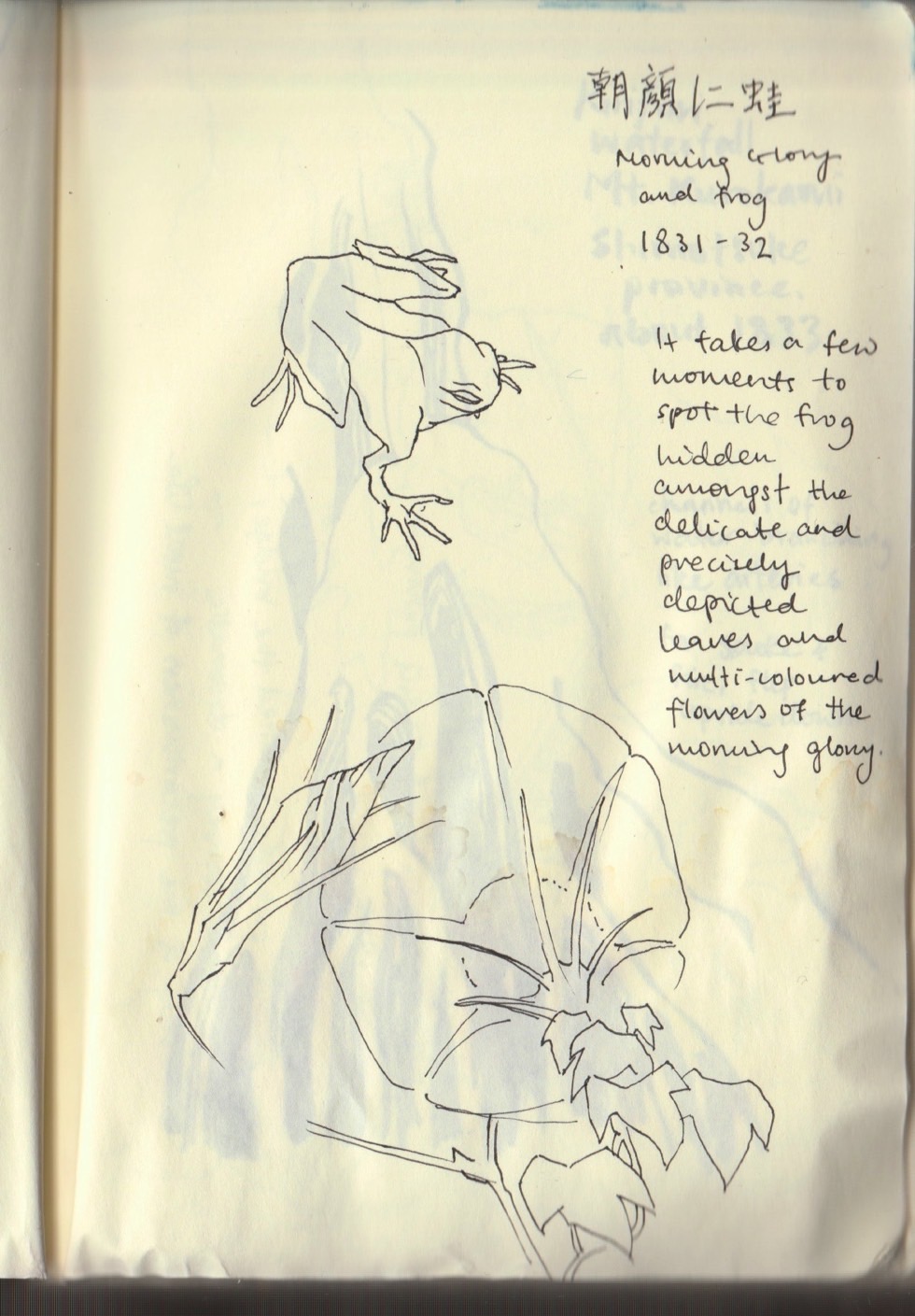
Sprint and rest, sprint and rest.
It was strategic to establish a rhythm in my exercises – to vacillate between the small and large, easy and hard, approximate and precise. After working with complicated layers and proportions, I returned to basic contouring exercises.
Waves and skiffs, frogs and flowers.
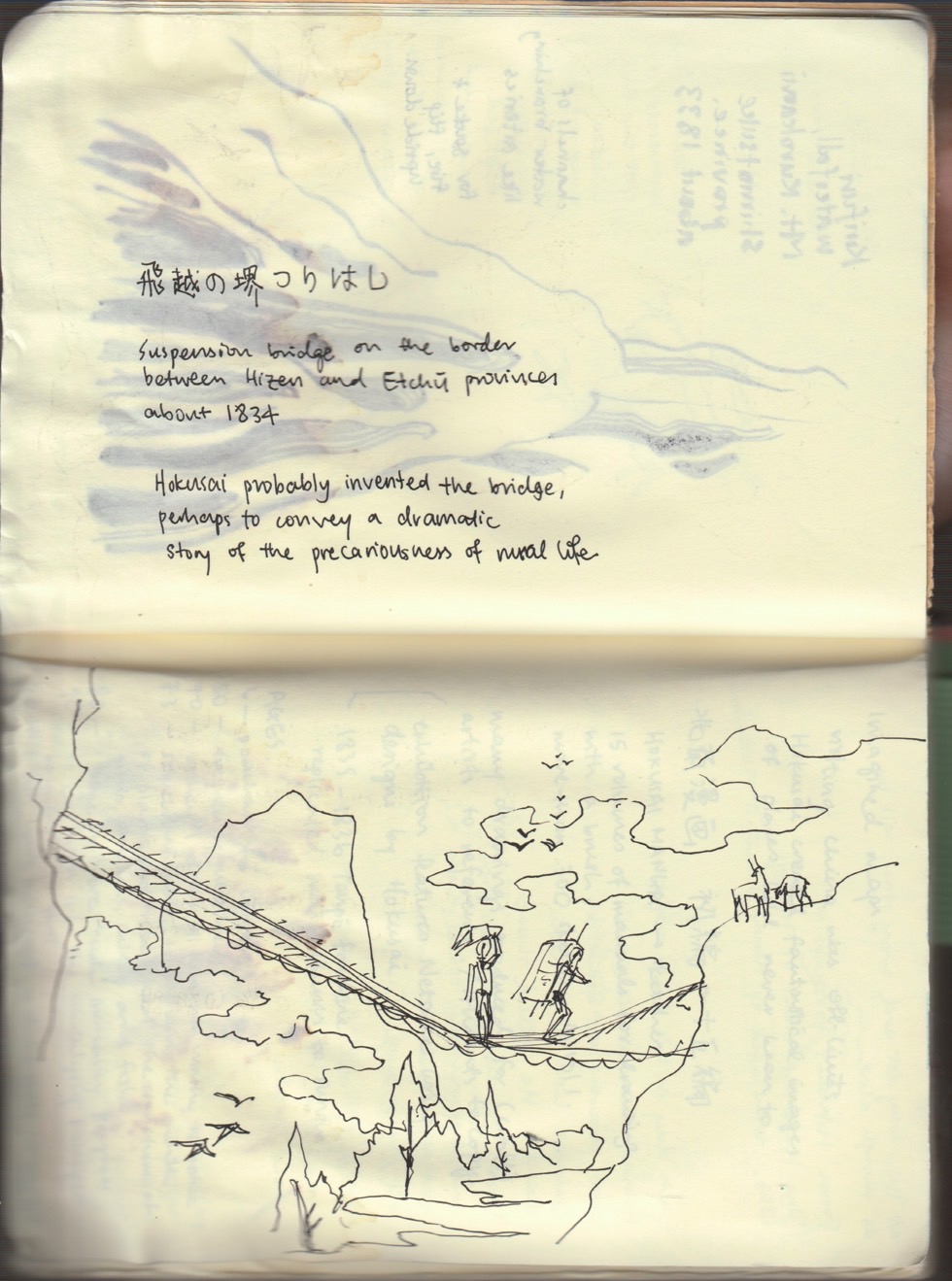
Accuracy is more important than precision…
In physics, accuracy refers to the closeness of a measured value to its actual value and precision refers to the closeness of two or more measured values. Loosely translated into visual terms, an accurately reproduced Kirifuri Waterfall would evoke a sense of arterial branches, even if it didn’t have the same thickness in line or variation in tone as the original; and an accurate copy of Suspension Bridge on the Border would convey ‘the precariousness of rural life’, even if it lacked the original’s form and colour.
The ‘correct’ likeness is needed to extrapolate a whole; the crux of the image could be in its execution (technique? composition?) or simply its idea: ‘Fuji with a hat.’
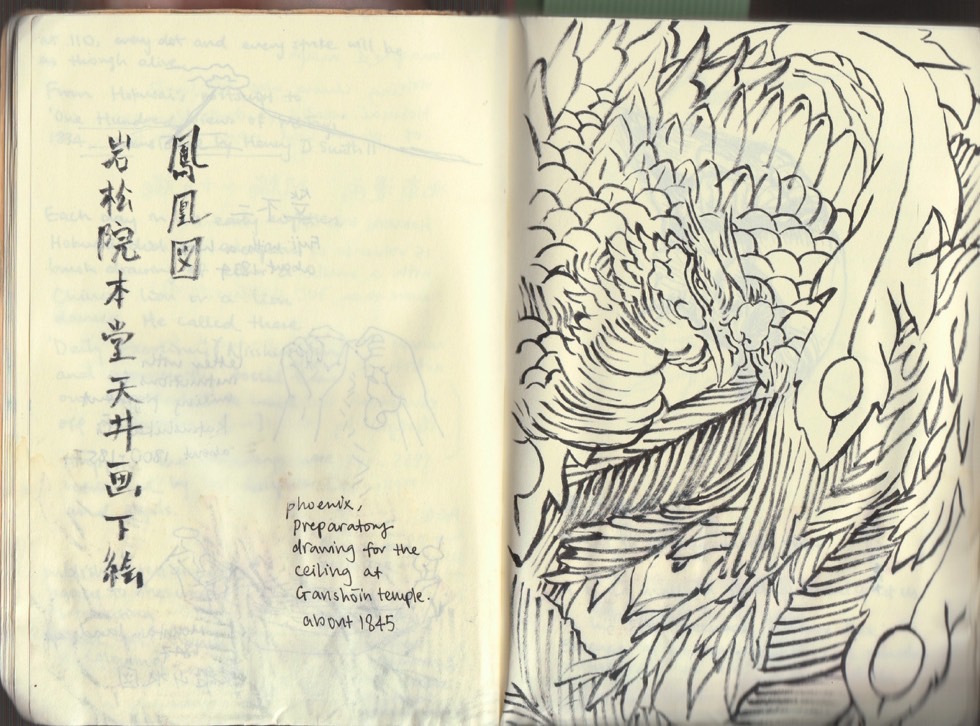
But accuracy doesn’t suffer with precision.
I counted the clefts in the phoenix’s plume (twelve), the strokes on its brow (twelve), and measured the slant of its eye ( \ ); repeated with the duck: bifurcated feathers on its back (nine and five), beak pointed straight down ( | ), and torso with an arch (like the profile of my thumb).
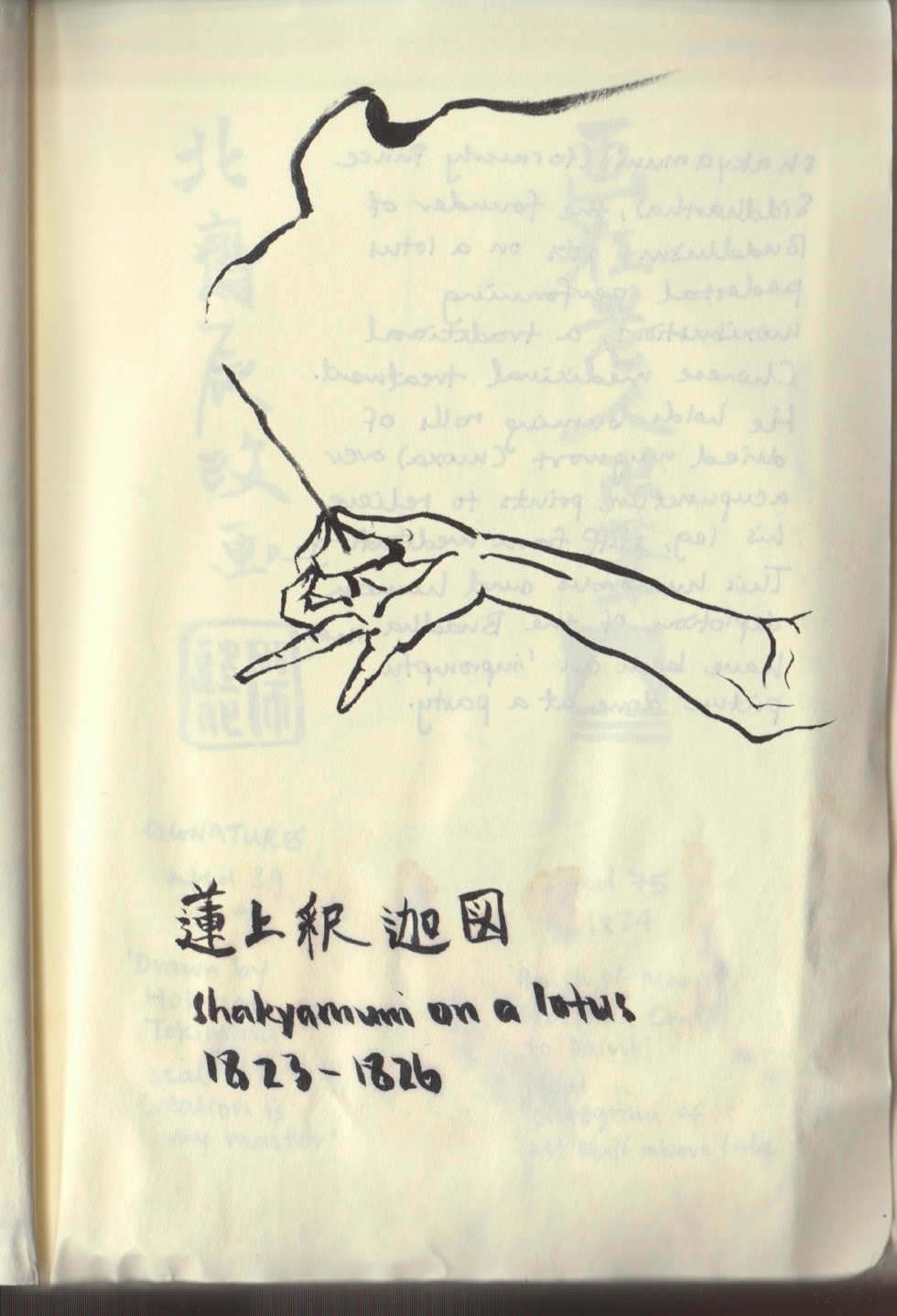
Humour helps.
Fourteen subjects in, my hands and feet were numb with pain (it’s hard to tell which) from standing – I felt guilty using the foldable seats – with a sketchbook gripped in my left hand; a pocket-sized watercolour set wedged between it, my thumb, and the ball of my palm; a pen of choice in my right.
Hokusai’s joke about the Buddha using moxibustion to relieve the pains of meditation was timely, something to laugh over, at my self-imposed suffering, to get through one more drawing.
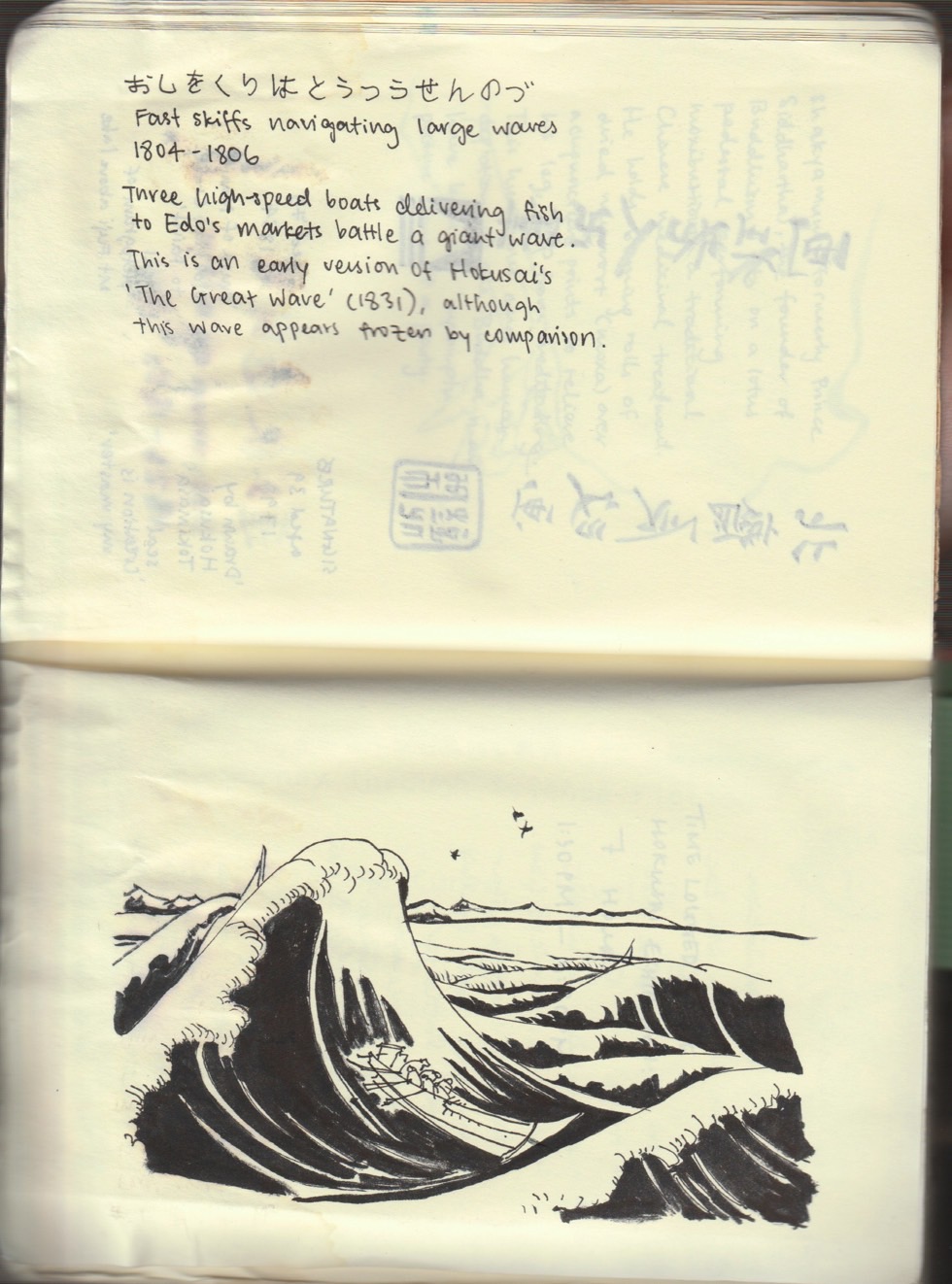
After the show, when it’s all been forgotten, revisit the drawings.
Twenty-two pages of notes interspersed with sixteen sketches.
Seven hours without sitting down or a bathroom break.
Sore hands, sore feet, sore eyes.
An unintentional endurance exercise.
It feels unnatural to quantify the day this way, to put words to these wordless processes. Each sketch is an act of comprehension in the absence of words, an internalising of a language written in strokes, hues, and tones. (Sounds trite even as I write it.)
But whose language is it? Before the eye is Hokusai, but the sketches are measured by my own skills, rhythms, ‘punctum’s, and processes of attunement to medium and image. Every inclusion an exclusion; little men on off-white pages surrounded by things I didn’t see. Pen and brush reduced and translated; artificial ink against organic pigment.
Did I pay attention to Hokusai, or did I pay attention to me?
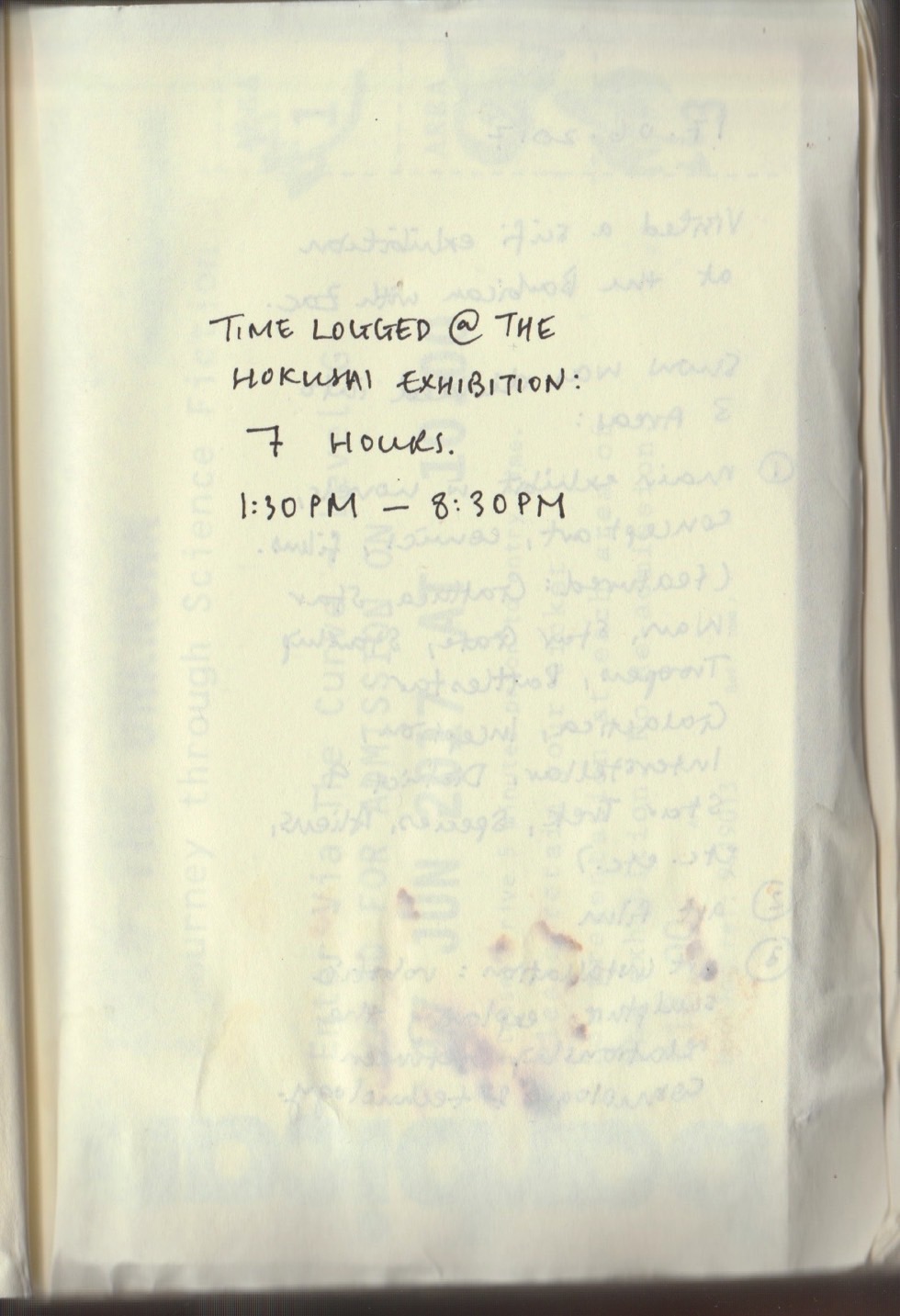
Text and drawings by Yin Ying Kong
Yin Ying saw Hokusai: Beyond the Great Wave at the British Museum, London, 16 June 2017





